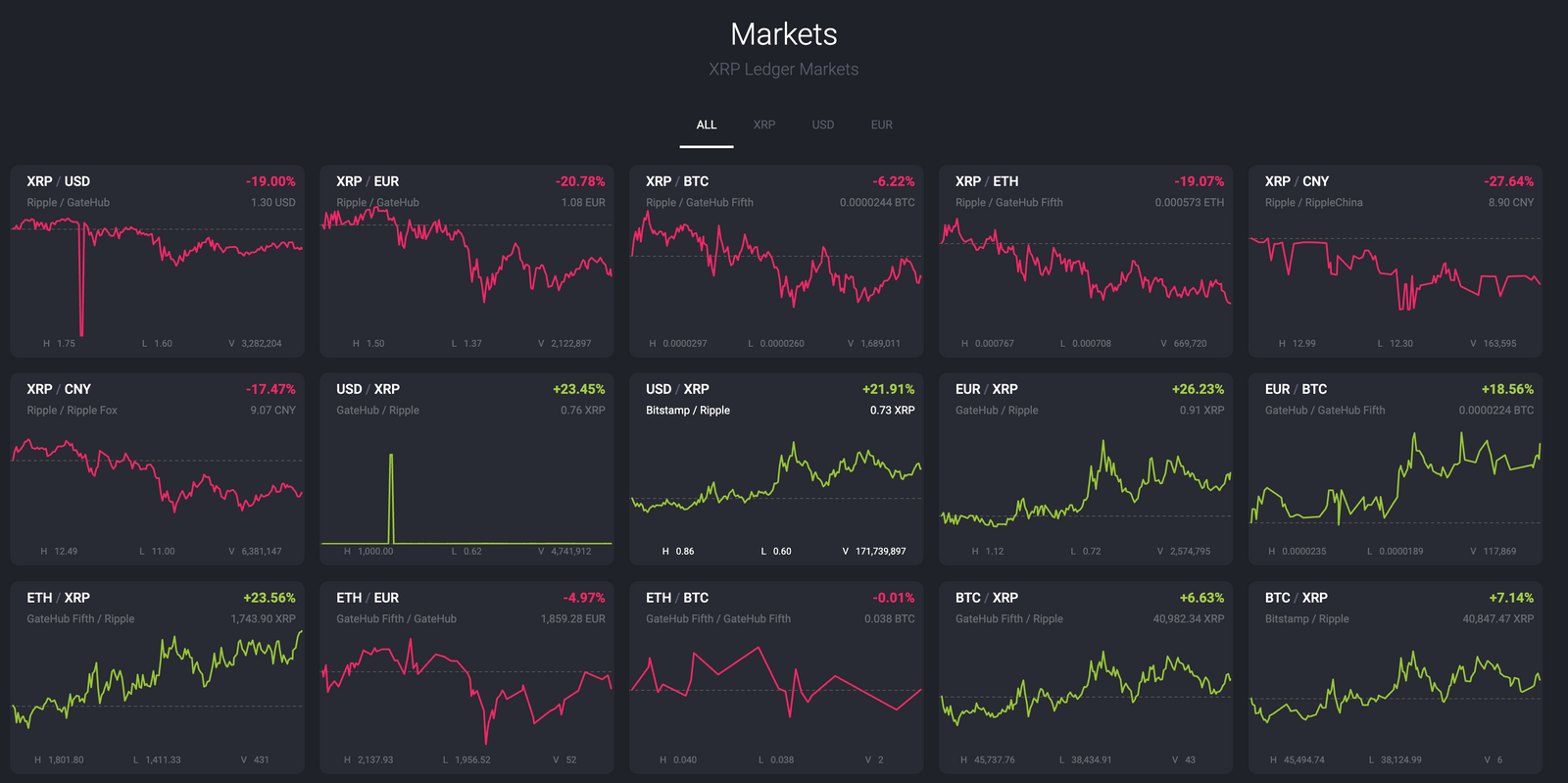The XRP Ledger has a built in exchange that lets users create offers to trade XRP and other issued currencies on the network. The basic principle is that once two or more offers match, value is exchanged between two addresses on the network.
What is the difference between a centralized exchange and a DEX?
Centralized exchanges are run by businesses that offer crypto and fiat ramps. These run on software called a trade engine. Centralized exchanges usually decide which currency pairs are available to trade and are able to add or remove them. They are also able to add or remove functionality from the exchange and engine and shut down the exchange at any moment.
A decentralized exchange such as the XRPL DEX is always on. Users of the network can create trade offers for any currency that exists on the network to any other currency. This is called any-to-any trading and it’s a rare sight on centralized exchanges. On a decentralized exchange the engine or a specific market* can never be shut down. The XRP Ledger uses trust lines so that an address can determine what currencies it’s willing to receive - unlike Ethereum, where a given address can receive anything at any time even if the owner doesn’t want that.
Check out live XRPL markets on GateHub.

What are the advantages of a decentralized exchange?
Centralized exchanges are usually faster and more flexible than a DEX, due to a central database that doesn’t need to be mined or accepted by many validators. On the XRPL, theoretically, each trade will need at least 3-4 seconds (the time to validate a ledger) to execute. On the other hand, the XRPL DEX is always on and you can always post a trade offer assuming you have access to your XRPL account.
Centralized exchanges have the ability to add a lot of functionality to their trading interfaces. On a decentralized network like the XRPL, changes need to be validated by a supermajority of nodes so amendments are few and far between. While you may see advanced trading features like stop-loss, leverage or derivatives on a centralized exchange it’s unlikely that we will see such features on a DEX soon.

Bonus feature on the XRPL
On the XRPL, which is primarily a fast payments network, there is another benefit of the built in exchange. It’s called auto-bridging and this means that XRP (or other currencies) can be used to act as an intermediary for payments. The feature works by scanning the order books to find a way to reduce the cost associated with a payment. For example, a person who holds currencies A and B can elect to send currency C to a selected destination via paths created by market offers.
Conclusion
The key is to figure out your actual needs. For most users of crypto a basic offer model like described above should be enough. If you want more advanced features, a centralized exchange is probably the way to go, but as always a word of caution. Please make sure you are aware of all of the financial risks associated with trading, advanced or otherwise.
*The exception to this are frozen currencies which can’t be traded or sent to other addresses.